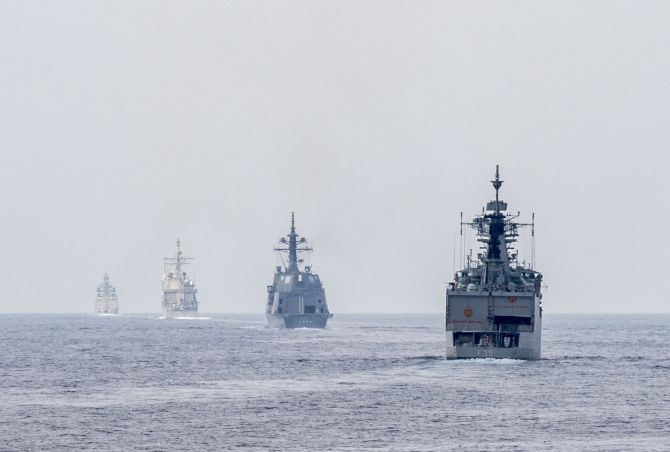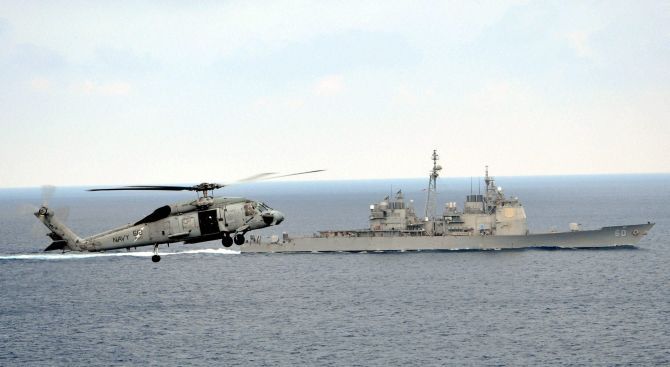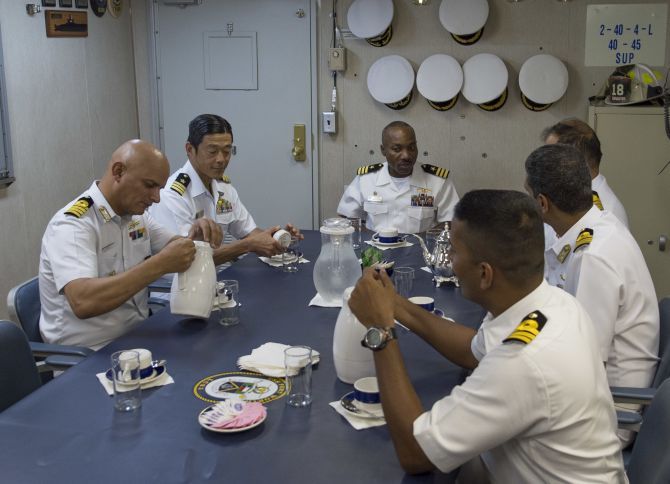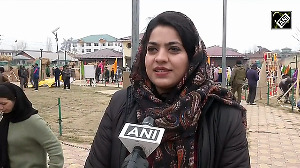Initiated in 1992, as a bilateral exercise between the Indian and US navies, the scope, complexity of operations and level of participation has increased steadily in successive editions of the India-US Malabar Naval Exercise as was witnessed in the 19th edition of the exercise that took place last week.

The 19th edition of the exercise was conducted in the Bay of Bengal from 14 -19 October 2015. Along with the Indian Navy and the US Naval Forces, the Japan Maritime Self-Defense Force also participated in the exercise.

The scope of Malabar 2015 included wide-ranging professional interactions during the Harbour Phase and a diverse range of operational activities at sea during the Sea Phase.

The littoral combat ship USS Fort Worth (LCS 3) completed the harbour phase of exercise Malabar in Chennai, India.
During the harbour phase in Chennai, the Fort Worth crew participated in subject matter expert and professional exchanges on maritime patrol and reconnaissance operations, surface and anti-submarine warfare, medical operations, damage control, helicopter operations and visit board search and seizure operations.

Included during the harbour phase was a tour of the Fort Worth for sailors from the India Navy and JMSDF.
During the tour, the sailors were given a presentation by sailors assigned to Helicopter Strike Squadron 35, Detachment 3 on the MQ-8B Fire Scout unmanned aircraft system and were briefed on the capabilities of Fort Worth.

2015 marked the first time that a US Navy littoral combat ship has participated in Malabar and will be the first time one has operated in the Indian Ocean, which will occur during the sea phase portion of Malabar.

"I think the US and India defence relationship stands on its own... when we think about our shared values -- rule of law, constitutional democracy (and) peaceful resolution of disputes -- and that the real impact of our two nations coming together from a strategic point of view, an economic point of view, political point is actually to increase peace and stability and prosperity," US Ambassador to India Richard Verma said about the exercise.

"I remember what (US) Vice-President (Joe) Biden said a few years ago that if the US and India are the closest friends and partners, the world will be a safer place. That is the heart of this relationship," he added.

Kelley said in the Asia-Pacific "this vast area of ocean is very, very important to the rest of the world, mostly due to the commerce that comes through."

"Lot of the world's commerce flows in and around Indo-Asia Pacific region. So we want to make sure that the lines of commerce, lines of communication stays open," he added.

The exercises included anti-submarine warfare, search and rescue and others, Kelley said while expressing happiness over the number of vessels and flights deployed by the Indian and Japanese navies.

There were a 'good mix' of frigates, destroyers and others, he said.

Craig Clapperton, Commanding Officer of the aircraft carrier, said, "This is a full spectrum maritime domain operation and the three navies are all working to the greatest extent possible to learn and enhance inter-operability.”










 © 2025
© 2025